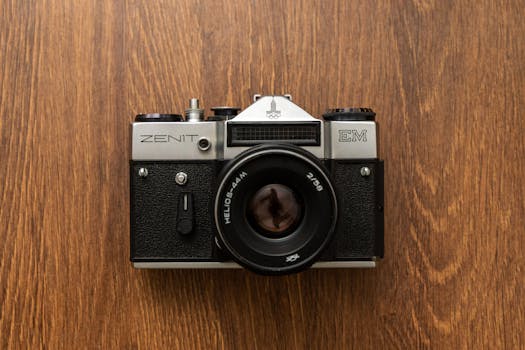Tutorials
Practical Tips to Transform Your Home Screen and Increase Productivity
Learn how to organize your smartphone's home screen with practical tips to increase productivity and improve the user experience. Personalize your device.
Advertisement
Organizing your smartphone's home screen may seem like a simple task, but the right approach transforms not only the device's appearance but also improves its functionality. A well-organized phone provides quick and efficient access to the most frequently used apps, eliminating the visual clutter that often accompanies digital clutter.
Everyone has their own routine and, consequently, different apps they need to access frequently. Therefore, adapting your home screen to your specific needs can save time, increase productivity, and improve the user experience. This article provides a practical guide to organizing your home screen, whether on Android or iOS.
Throughout this text, you'll find useful tips and strategies for organizing your apps. The idea is to create a digital environment that combines efficiency and aesthetics, allowing for smooth navigation. Let's begin by understanding how to take the first step toward a more functional home screen.
Initial Planning: Assess Your Habits
Before you start reorganizing, take a moment to analyze your habits. By observing which apps you use most frequently, you can determine which ones should be easily accessible.
Also, consider what's not being used. Sometimes, apps take up precious space without providing any benefits. A clear understanding of what we really need is essential for good planning.
This may include deleting apps that were downloaded out of curiosity but aren't actually used. This organization is an essential step in optimizing your home screen.
Finally, make a list of essential apps. This list will serve as a guide for organizing your home screen to suit your personal needs. Having clarity about what's essential makes it easier to organize later.
In short, initial planning allows you to visualize what you really need to have on hand. With a clear vision, it's time to move forward and customize your home screen.
Categorize Your Apps
Categorizing apps is an effective strategy for avoiding visual clutter. Grouping similar apps makes them easier to find and provides a more seamless user experience.
Consider categories like work, leisure, communication, and utilities. This way, you can create folders that group similar apps, making them easier to access. This method works on both Android and iOS.
A good practice is to name folders intuitively. Clear, straightforward names help quickly identify the purpose of each category. An organized user immediately knows where to find what they need.
In addition to folders, use essential widgets on your screen. They can display relevant information in a practical way, such as the weather forecast or daily tasks. These elements ensure efficient access to the most relevant information.
By categorizing your apps, you reduce visual clutter and make them easier to access. This strategy not only improves the aesthetics of your home screen but also improves your device's functionality.
Prioritize Quick Access
In today's world, quick access to apps is essential. Structure your home screen based on frequency of use to maximize productivity. Place your most-used apps in easy-to-access locations.
The first page can be dedicated to the most essential apps, while the remaining pages house the less frequently used ones. This creates a hierarchy that makes navigating the home screen easier.
Also consider using features like "Shortcuts" or "Pinned Widgets." These tools allow you to access apps or functions directly, without having to navigate through multiple screens.
Android and iOS systems offer a variety of customization options. Explore these features to maximize your device's efficiency and adapt its use to your daily needs.
With quick access in mind, organize your apps. This practice not only saves time but also promotes a more enjoyable and organized digital experience.
Eliminate Visual Pollution
A clean home screen contributes to a more relaxed and enjoyable smartphone experience. To achieve this, eliminate unnecessary elements that create visual clutter. Simplifying the screen is essential.
Use a non-distracting wallpaper. Overly complex images can make it difficult to identify apps. Choosing a minimalist background provides a sense of organization.
Also, avoid excessive widgets. While useful, too many widgets can clutter your home screen and make interaction confusing. Select the most relevant ones and leave the rest aside.
Choose icons that harmonize visually. Using themes or icon packs can help standardize the screen's appearance, avoiding a cluttered appearance.
Finally, a harmonious layout is vital. Make sure each element on the home screen has its own function and contributes to a pleasant user experience.
Use Folders Strategically
Folders are powerful tools for organization. They allow you to group related apps, simplifying navigation. Use them to group apps by category in a logical and practical way.
Consider creating folders for broad categories like "Social Media," "Finance," and "Games." This approach not only makes navigation more intuitive but also helps reduce visual clutter.
Keep a controlled number of apps within each folder. Too many options can be confusing, so limit the number of apps in each group.
To make things even easier, choose icons that help you quickly identify folders. A good visual selection makes it easier to quickly access and identify the apps you want.
Folders should be accessible and functional. Reviewing their structure periodically ensures they continue to meet your needs and that your home screen remains organized.
Perform Periodic Reviews
Organizing your home screen shouldn't be a one-time task. Performing regular checks is essential to keeping your device in order. Do this every few months.
Review which apps are in use and which can be removed. Technology evolves rapidly, and many apps can become obsolete. Discard what is no longer needed.
Also, consider whether new categories can be created. New apps or changes in usage habits may warrant reorganization. Constant adaptation is key to a functional home screen.
Consider app updates that may bring new features. Sometimes, a previously deleted app can gain new use with improvements or new features. It's worth reinvestigating.
In short, regular reviews ensure ongoing organization. This practice is vital to keeping your home screen clean and efficient, aligned with your needs whenever necessary.
Conclusion
Organizing your smartphone's home screen is an essential process that can improve the efficiency and aesthetics of your device. Following the guidelines outlined here will ensure a more enjoyable and productive user experience.
Analyze your habits, categorize apps, and prioritize their access. Eliminate visual clutter and use strategic folders to maximize functionality. Understand that this is an ongoing process that deserves periodic reviews.
Your smartphone's customization should reflect your needs and lifestyle. Ultimately, the right organization transforms not just your home screen, but your entire digital experience.
Adopt an organized and functional smartphone. This change not only provides practicality but also a more harmonious interaction with technology in your daily life. Happy organizing!





